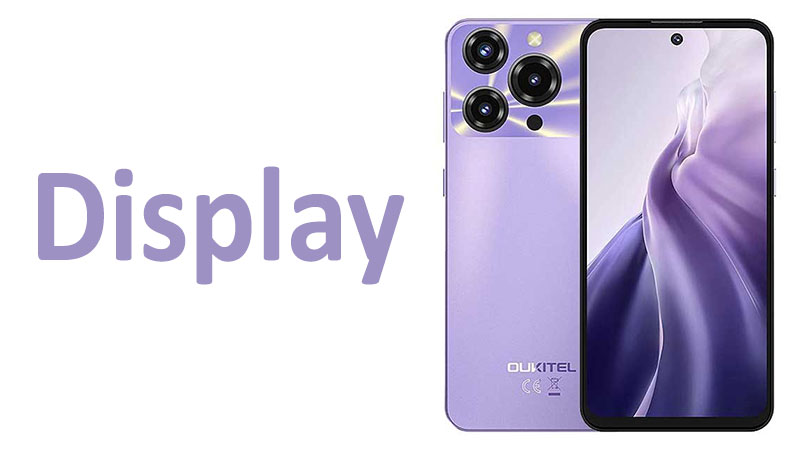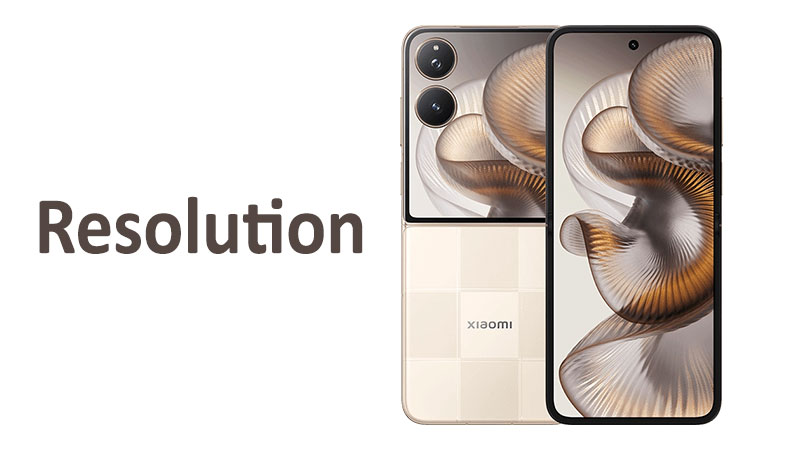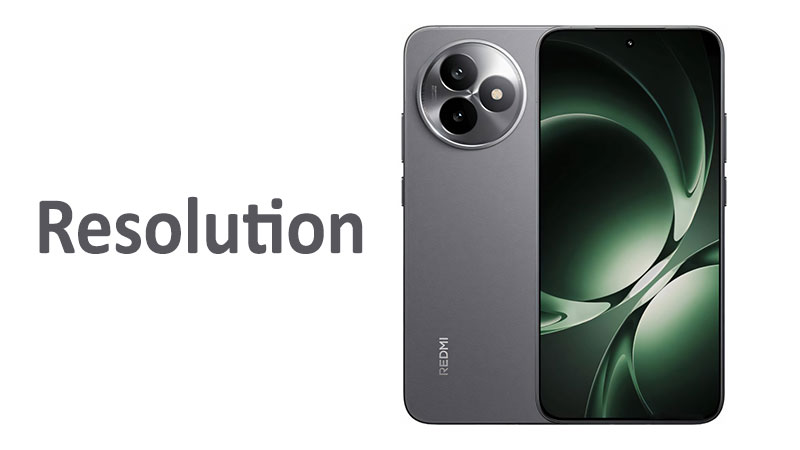The Oukitel C69 display sets the tone for this large-format, budget-conscious smartphone. The screen quality is arguably the most important feature on any mobile device. It determines everything from how smooth your daily scrolling feels to how enjoyable videos become. This detailed review explores every technical specification of the Oukitel C69 screen. We will break down its IPS LCD panel, the unusual 120Hz refresh rate, its massive size, and the lower HD+ resolution. Understanding these factors ensures readers make a fully informed purchasing decision. This article serves as your comprehensive guide to the Oukitel C69 display quality.
Core Display Technology: Analyzing the IPS LCD Panel
The Oukitel C69 uses an In-Plane Switching Liquid Crystal Display, or IPS LCD panel. This technology differs significantly from the popular AMOLED screens. IPS LCDs use a backlight to illuminate the pixels. This structure brings both advantages and limitations to the display experience.
Uniformity and Color Consistency
A primary benefit of IPS technology is its color uniformity. The entire panel receives illumination from a consistent backlight. This means the colors look reliable across the screen. IPS panels also maintain good color accuracy. They reproduce a wide range of colors for viewing media. This consistency is especially useful for general tasks.
Viewing Angles and Color Shift
IPS panels typically offer excellent viewing angles. You can tilt the phone significantly without major color distortion. This is a crucial feature for sharing content with others. Colors may appear slightly less saturated at extreme angles, however. The image remains generally visible and usable, which is a key IPS strength. This contrasts with older LCD types that show significant color inversion.
IPS Versus AMOLED Technology
The Oukitel C69 uses IPS, which is cheaper to manufacture than AMOLED. AMOLED technology offers perfect blacks because individual pixels turn off. IPS LCDs cannot achieve this level of black depth. The backlight remains partially active even when displaying dark scenes. Consequently, black areas on the Oukitel C69 might look grayish or dark blue. AMOLED wins on contrast. However, IPS often avoids the screen flickering issues sometimes seen on AMOLED screens. This difference makes IPS easier on the eyes for some sensitive users.
Power Efficiency of IPS LCD
An IPS LCD panel draws more power than an AMOLED panel in most scenarios. This is because the backlight must stay on constantly. AMOLED only lights up the necessary pixels. Despite this, the lower 720p resolution of the Oukitel C69 helps balance the power draw. The HD+ resolution requires less processing power overall. Therefore, the overall battery life remains competitive. This clever combination helps manage the phone’s power budget effectively.
The High Refresh Rate: 120Hz on an IPS Screen
One of the most surprising features of the Oukitel C69 display is its 120Hz refresh rate. This specification is usually reserved for higher-end smartphones. The refresh rate dictates how many times the image updates per second.
Fluidity and Smoothness Advantage
The 120Hz rate updates the screen 120 times every second. This doubles the fluidity of a standard 60Hz display. The difference in motion quality is immediately visible. Scrolling through social media feeds becomes extremely smooth. App animations look slicker and more responsive. This high refresh rate makes the Oukitel C69 feel surprisingly fast. It significantly improves the general day-to-day user experience.
Gaming Performance and Experience
Competitive mobile games benefit greatly from 120Hz. The display can render 120 frames per second if the phone’s processor allows it. This reduces motion blur during fast-paced action. It also gives players a marginal advantage in reaction time. The smooth visual feedback enhances the immersion. This feature makes the Oukitel C69 an interesting option for budget-conscious gamers.
The 120Hz IPS Trade-Off
Implementing a 120Hz refresh rate on an IPS panel has a trade-off. IPS screens generally have slower pixel response times than AMOLED panels. This can sometimes lead to slight “ghosting” or smearing. This effect is visible behind fast-moving objects, especially when scrolling dark content. AMOLED panels typically handle 120Hz motion with superior clarity. For the Oukitel C69, the 120Hz rate still provides a massive improvement over 60Hz. Most users will enjoy the added smoothness despite this minor limitation.
Comparison: 120Hz vs. 60Hz and Competitors
Most competing budget phones offer a standard 60Hz display. The move to 120Hz gives the Oukitel C69 a notable edge in perceived speed. Some rivals may use a 90Hz panel. The Oukitel C69’s 120Hz rate is still visibly superior to 90Hz. It provides near-flagship levels of smoothness in terms of refresh frequency. This specification is a major selling point for the Oukitel C69 display.
Size and Immersion: The Massive 7.2-inch Canvas
The physical size of the Oukitel C69 display is one of its most defining characteristics. At 7.2 inches diagonally, this screen is truly enormous. It offers an expansive viewing area for various activities.
Maximum Media Consumption
The huge 7.2-inch size is perfect for multimedia enthusiasts. Movies and TV shows fill the user’s field of vision. This creates a highly immersive, tablet-like experience. Reading long articles or comics also benefits from the generous screen space. It minimizes the need for constant scrolling. The phone is essentially a small portable entertainment center.
Ergonomics and Handling
The large screen size, however, presents ergonomic challenges. A 7.2-inch device can feel unwieldy in one hand. Reaching the top corners of the screen often requires shifting your grip. Users with small hands may find this phone challenging to use single-handedly. The phone also requires larger pockets or bags for comfortable carrying. Buyers must consider if they prefer a large screen over pocketability.
Screen-to-Body Ratio
The Oukitel C69 achieves a respectable ~87.0% screen-to-body ratio. This ratio indicates that the bezels around the display are relatively thin. This maximizes the usable screen space on the phone’s face. Thin bezels contribute to the modern look of the device. They ensure the large display is not surrounded by excessive plastic or metal. The maximized screen area enhances the overall viewing experience.
Comparison to Standard Smartphone Sizes
The Oukitel C69’s 7.2 inches significantly surpasses the current standard of 6.5 to 6.7 inches. It rivals screens previously found only on small tablets. This immense size is a deliberate choice for users who prioritize content viewing. It is much larger than many comparable budget phones. This is a key differentiator for the Oukitel C69 in its market segment.
Resolution and Clarity: Understanding the 720p HD+
The screen’s resolution is a critical factor for sharpness and clarity. The Oukitel C69 features a 720 x 1560 pixel resolution. This is a High Definition Plus (HD+) resolution.
Pixel Density and Sharpness
The combination of the large 7.2-inch size and the 720p resolution results in a pixel density of approximately 239 ppi. Pixels per inch, or ppi, measures the density of individual pixels. A density of 239 ppi is noticeably lower than the 300+ ppi typically found on Full HD (1080p) screens. Therefore, the image clarity is not razor-sharp.
Impact on Text and Media
Users may be able to see individual pixels when looking closely at the screen. Text edges might appear slightly softer than on a 1080p screen. High-resolution images and videos will not be displayed with maximum detail. However, for casual video viewing and general navigation, the resolution is perfectly functional. The resolution is a clear trade-off to keep the cost of the device low.
The Budget Trade-Off in Clarity
The 720p resolution is the biggest compromise on the Oukitel C69 display. A lower resolution requires less computing power from the processor. This allows the phone to run more smoothly. It also contributes to the better battery efficiency mentioned earlier. The trade-off is a slight loss of sharpness. For users prioritizing maximum size and 120Hz smoothness over pin-sharp clarity, this is a reasonable exchange.
Comparison: 720p at 7.2″ vs. 1080p at 6.5″
A standard 6.5-inch phone with a 1080p screen achieves about 400 ppi. This is significantly sharper than the Oukitel C69’s 239 ppi. If clarity is your absolute priority, the Oukitel C69 is not the best choice. If you value a huge screen and high refresh rate above all else, the 720p resolution is acceptable. You are choosing size and speed over density.
Brightness Performance: 500 Nits for Daily Use
Display brightness determines screen visibility in different lighting conditions. The Oukitel C69 display offers a peak brightness of 500 nits. Nits measure the light output of the screen.
Indoor Usability and Comfort
A brightness of 500 nits is more than adequate for indoor use. The screen is easily visible and comfortable to view in homes and offices. It provides good visibility for casual tasks like web browsing or reading. Users will likely set the brightness much lower than 500 nits indoors. This further helps to conserve battery life.
Outdoor Visibility Challenges
Outdoor visibility presents a greater challenge for the Oukitel C69. 500 nits may struggle against direct, bright sunlight. Users may need to shield the screen with their hand outdoors. Viewing photos or watching videos becomes more difficult under intense light. The screen is still usable, but readability is significantly reduced.
Comparison with Higher-End Displays
Higher-end smartphones often reach 1000 to 1500 nits of peak brightness. This allows them to cut through bright sunlight easily. The Oukitel C69’s 500 nits figure places it firmly in the budget category. This is one of the clearest indicators of its cost-saving measures. Buyers should adjust their expectations for extreme outdoor use accordingly.
The Role of Automatic Brightness
The phone uses an ambient light sensor to adjust brightness automatically. This helps to maximize the screen’s performance. The automatic setting will try to push the display to its 500-nit limit outdoors. This feature helps to ensure the best possible visibility in changing conditions. The user can rely on the system to manage light levels efficiently.
Durability: Panda Glass and Mohs Level 5
The Oukitel C69 is a budget-focused device. However, durability remains an important consideration for many users. The screen is protected by Panda Glass. It also boasts a scratch resistance rating of Mohs level 5.
What is Panda Glass?
Panda Glass is a brand of chemically strengthened alkali-aluminosilicate glass. It serves as a competitor to products like Corning Gorilla Glass. Panda Glass is commonly used in many budget and mid-range devices. It provides a good balance of cost and protection. It is designed to resist daily wear and tear effectively.
Mohs Level 5 Scratch Resistance
The Mohs scale measures the hardness of minerals and materials. A rating of Mohs level 5 indicates the material resists scratches from materials softer than it. For example, common metallic objects like keys are often softer than level 5. However, level 6 materials, like sand, will typically scratch the screen. This is a common resistance level for modern display glass. It offers basic protection against everyday objects.
Real-World Durability
Panda Glass provides adequate protection against minor scratches and scuffs. It helps the screen stay in good condition during typical use. However, drops onto hard, abrasive surfaces still pose a risk. The large 7.2-inch screen size also means more surface area is vulnerable to impact damage. Users should still invest in a protective case. This offers crucial edge-to-edge drop protection for the large display.
Comparison to Other Protection Types
Gorilla Glass, often found on more expensive phones, generally offers superior drop performance. The Oukitel C69’s Panda Glass offers a satisfactory level of protection for its price point. It performs reliably against minor abrasions. Users should understand that this is a budget-level defense. It is not as robust as the latest flagship glass technologies.
Oukitel C69 Display Pros and Cons
A complete assessment requires a clear look at the display’s key strengths and weaknesses. The Oukitel C69 display makes some distinct choices. These choices are designed to fit its specific market segment.
Key Advantages (Pros)
The 7.2-inch size provides an incredibly large, immersive viewing area. This is ideal for media consumption. The 120Hz refresh rate offers exceptional fluidity for scrolling and gaming. This is a rare feature in this price bracket. The IPS LCD panel ensures accurate and uniform color reproduction. It also features very wide viewing angles. The high 87.0% screen-to-body ratio contributes to a modern, bezel-minimized design. The 720p resolution is highly efficient for battery power. This helps maximize the phone’s operational time. Panda Glass provides a reasonable level of protection against daily scratches.
Limitations and Drawbacks (Cons)
The 720p HD+ resolution results in a low pixel density of 239 ppi. This sacrifices image sharpness and fine detail. The 500 nits brightness is insufficient for comfortable viewing in direct, bright sunlight. The IPS LCD technology cannot achieve the perfect blacks and infinite contrast of AMOLED panels. The large 7.2-inch size makes the phone difficult to handle with one hand. The IPS panel’s response time is slower than AMOLED. This can cause minor ghosting during fast motion. The display uses older, less power-efficient IPS technology.
Essential Buyer Guidance: Who Should Buy This Screen?
The unique specifications of the Oukitel C69 display target a very specific type of user. Potential buyers should consider their priorities carefully. The phone makes deliberate trade-offs in its design.
The Media and Gaming Enthusiast
This phone is an excellent choice for budget-conscious media consumers. The massive 7.2-inch size provides an immersive cinema experience. The 120Hz refresh rate also makes streaming and casual gaming feel incredibly smooth. If size and fluidity matter more than absolute sharpness, this phone is a strong contender. The screen offers a huge amount of usable real estate.
The Budget-Focused Buyer
The phone’s 720p resolution and 500 nits brightness are clear cost-saving measures. These specifications help keep the price accessible. Buyers must understand they are getting high speed and massive size at the expense of premium clarity. If affordability is paramount, these compromises are perfectly acceptable. The overall display package is still highly usable and modern-looking.
Users Requiring Outdoor Visibility
The Oukitel C69 is less suited for heavy outdoor use. The 500 nits brightness may struggle in bright conditions. Users who spend significant time outside should consider a phone with a higher peak brightness. This ensures better readability in sunny environments. You will need to seek shade to view the screen comfortably.
Handling and Ergonomics
Anyone accustomed to smaller phones should try to handle a 7.2-inch device first. The massive size affects portability and single-handed ease. This phone works best as a two-handed device. It is essentially a phablet, blurring the line between a phone and a tablet. A user who values screen size above all else will appreciate the immense display.
Final Summary and Verdict
The Oukitel C69 display presents an interesting, unique package in the budget smartphone market. It cleverly combines a few flagship-level features with budget-friendly compromises. The central strength is the combination of its colossal 7.2-inch size and the fluid 120Hz refresh rate. These two factors create a highly engaging and dynamic user experience. The 120Hz smoothness is particularly impressive at this price point.
However, buyers must acknowledge the trade-offs in clarity. The 720p HD+ resolution results in a modest pixel density of 239 ppi. This is the main limitation for viewing detailed content. The 500-nit brightness is also average. It will struggle to compete with strong sunlight. The IPS LCD panel offers good colors and viewing angles. It cannot match the deep contrast of AMOLED rivals.
Ultimately, the Oukitel C69 display is an excellent choice for a specific user. This user prioritizes screen size, gaming smoothness, and overall value. The phone delivers an immersive media experience in an affordable package. It is a smart choice for anyone seeking maximum screen real estate without a premium price tag.
Frequently Asked Questions
What is the screen size of the Oukitel C69?
The Oukitel C69 features a massive 7.2-inch display. This provides an expansive area for viewing content.
Is the Oukitel C69 screen an AMOLED or LCD?
The Oukitel C69 uses an IPS LCD panel. This technology is known for its wide viewing angles and uniform color.
What is the pixel density of the 720p screen?
The pixel density is approximately 239 pixels per inch (ppi). This provides adequate, but not extremely sharp, clarity.
How durable is the Oukitel C69 display glass?
The screen uses Panda Glass protection. It offers a scratch resistance rating of Mohs level 5. This protects against minor, everyday abrasions.
Does the 120Hz refresh rate affect battery life?
Yes, the 120Hz refresh rate uses more battery power than a standard 60Hz rate. The lower 720p resolution helps mitigate this increased power usage.



